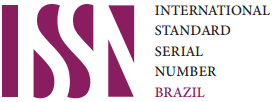Qualidade do sono, tempo de tela e memória episódica verbal em adolescentes: um estudo transversal
DOI:
https://doi.org/10.25118/2763-9037.2025.v15.1461Palavras-chave:
sono, memória, adolescentes, aprendizado, tempo de tela, qualidade do sonoResumo
Introdução: O sono exerce papel fundamental na consolidação da memória. A adolescência possui maior vulnerabilidade à má qualidade do sono. Embora existam evidências do impacto da privação de sono na memória, são escassos os estudos que relacionam a qualidade subjetiva do sono e o uso de telas ao desempenho em memória episódica verbal nessa faixa etária. Objetivo: Investigar a relação entre qualidade subjetiva do sono, tempo de tela antes de dormir e memória episódica verbal. Métodos: Foi feita assinatura do Termo de Consentimento Livre e Esclarecido (TCLE) pelos pais e do Termo de Assentimento Livre e Esclarecido (TALE) pelos adolescentes. Parecer CEP: Universidade FUMEC. CAAE: 65494822800005155. Estudo transversal com 21 estudantes do ensino médio (15 a 17 anos). Foram aplicados o Índice de Qualidade do Sono de Pittsburgh (PSQI), o Teste Auditivo Verbal de Rey (RAVLT), um questionário adicional e o subteste Raciocínio Matricial do Beta-III. As análises incluíram correlação de Spearman, teste de Mann-Whitney e regressão linear. Resultados: Houve correlação entre tempo de tela antes de dormir e velocidade de esquecimento (ρ=0,540; p=0,012), além de associação entre má qualidade do sono e interferência retroativa (ρ = 0,467; p = 0,033). A regressão mostrou que o tempo de tela previu a velocidade de esquecimento (R² = 0,511; p = 0,024), e a qualidade do sono previu a interferência retroativa (R² = 0,560; p = 0,011). Diferenças entre sexos foram observadas, sem significância estatística. Conclusão: A má qualidade do sono e a utilização de telas à noite associaram-se a prejuízos na memória episódica verbal.
Downloads
Métricas
Referências
1. Rasch B, Born J. About sleep's role in memory. Physiol Rev. 2013;93(2):681–766. https://doi.org/10.1152/physrev.00032.2012
2. Beattie L, Kyle SD, Espie CA, Biello SM. Social interactions, emotion and sleep: a systematic review and research agenda. Sleep Med Rev. 2015;24:83–100. https://doi.org/10.1016/j.smrv.2014.12.005
3. Aly M, Moscovitch M. The effects of sleep on episodic memory in older and younger adults. Memory. 2010;18(3):327–34. https://doi.org/10.1080/09658211003601548
4. Campbell IG, Cruz-Basilio A, Darchia N, Zhang ZY, Feinberg I. Effects of sleep restriction on the sleep electroencephalogram of adolescents. Sleep. 2021;44(6):1-9. https://doi.org/10.1093/sleep/zsaa280
5. Cousins JN, Fernández G. The impact of sleep deprivation on declarative memory. Prog Brain Res. 2019;246:27–53. https://doi.org/10.1016/bs.pbr.2019.01.007
6. Klinzing JG, Niethard N, Born J. Mechanisms of systems memory consolidation during sleep. Nat Neurosci. 2019;22(10):1598–610. https://doi.org/10.1038/s41593-019-0467-3
7. Voderholzer U, Piosczyk H, Holz J, Landmann N, Feige B, Loessl B, Kopasz M, Doerr JP, Riemann D, Nissen C. Sleep restriction over several days does not affect long-term recall of declarative and procedural memories in adolescents. Sleep Med. 2011;12(2):170–8. https://doi.org/10.1016/j.sleep.2010.07.017
8. Stickgold R. Sleep-dependent memory consolidation. Nature. 2005;437(7063):1272–8. https://doi.org/10.1038/nature04286
9. Uccella S, Cordani R, Salfi F, Gorgoni M, Scarpelli S, Gemignani A, Geoffroy PA, De Gennaro L, Palagini L, Ferrara M, Nobili L. Sleep deprivation and insomnia in adolescence: implications for mental health. Brain Sci. 2023;13(4):569. https://doi.org/10.3390/brainsci13040569
10. Shepard JW Jr, Buysse DJ, Chesson AL Jr, Dement WC, Goldberg R, Guilleminault C, Harris CD, Iber C, Mignot E, Mitler MM, Moore KE, Phillips BA, Quan SF, Rosenberg RS, Roth T, Schmidt HS, Silber MH, Walsh JK, White DP. History of the development of sleep medicine in the United States. J Clin Sleep Med. 2005;1(1):61–82. https://pubmed.ncbi.nlm.nih.gov/17561617/
11. Feinberg I, Campbell IG. Sleep EEG changes during adolescence: an index of a fundamental brain reorganization. Brain Cogn. 2010;72(1):56–65. https://doi.org/10.1016/j.bandc.2009.09.008
12. Calhoun SL, Fernandez-Mendoza J, Vgontzas AN, Liao D, Bixler EO. Prevalence of insomnia symptoms in a general population sample of young children and preadolescents: gender effects. Sleep Med. 2014;15(1):91–5. https://doi.org/10.1016/j.sleep.2013.08.787
13. Patton GC, Viner R. Pubertal transitions in health. Lancet. 2007;369(9567):1130–9. https://doi.org/10.1016/S0140-6736(07)60366-3
14. Lund L, Sølvhøj IN, Danielsen D, Andersen S. Electronic media use and sleep in children and adolescents in western countries: a systematic review. BMC Public Health. 2021;21(1):1598. https://doi.org/10.1186/s12889-021-11640-9
15. Han X, Zhou E, Liu D. Electronic media use and sleep quality: updated systematic review and meta-analysis. J Med Internet Res. 2024;26:e48356. https://doi.org/10.2196/48356
16. Higuchi S, Motohashi Y, Liu Y, Maeda A. Effects of playing a computer game using a bright display on pre-sleep physiological variables, sleep latency, slow wave sleep and REM sleep. J Sleep Res. 2005;14(3):267–73. https://doi.org/10.1111/j.1365-2869.2005.00463.x
17. Cain N, Gradisar M. Electronic media use and sleep in school-aged children and adolescents: a review. Sleep Med. 2010;11(8):735–42. https://doi.org/10.1016/j.sleep.2010.02.006
18. Exelmans L, Van den Bulck J. Bedtime mobile phone use and sleep in adults. Soc Sci Med. 2016;148:93–101. https://doi.org/10.1016/j.socscimed.2015.11.037
19. Shochat T, Cohen-Zion M, Tzischinsky O. Functional consequences of inadequate sleep in adolescents: a systematic review. Sleep Med Rev. 2014;18(1):75–87. https://doi.org/10.1016/j.smrv.2013.03.005
20. Newbury CR, Crowley R, Rastle K, Tamminen J. Sleep deprivation and memory: meta-analytic reviews of studies on sleep deprivation before and after learning. Psychol Bull. 2021;147(11):1215–40. https://doi.org/10.1037/bul0000348
21. Pasula EY, Brown GG, McKenna BS, Mellor A, Turner T, Anderson C, Drummond SPA. Effects of sleep deprivation on component processes of working memory in younger and older adults. Sleep. 2018;41(3):1-9. https://doi.org/10.1093/sleep/zsx213
22. Kline CE. Sleep quality. In: Gellman MD, editor. Encyclopedia of Behavioral Medicine. Cham: Springer; 2020. p. 2064-66. https://doi.org/10.1007/978-3-030-39903-0_849
23. Bertolazi AN. Tradução, adaptação cultural e validação de dois instrumentos de avaliação do sono: escala de sonolência de Epworth e índice de qualidade de sono de Pittsburgh [dissertação]. Porto Alegre: Universidade Federal do Rio Grande do Sul; 2008. https://lume.ufrgs.br/bitstream/handle/10183/14041/000653543.pdf
24. Rabelo I, Pacanaro SV, Rosado PGL, Reppold CT, Gurgel LG, Primi R. Revised Beta Examination. 3rd ed. São Paulo: Casa do Psicólogo; 2011.
25. De Paula JJ, Malloy-Diniz LF. Teste de aprendizagem auditivo-verbal de Rey (RAVLT): livro de instruções. São Paulo: Vetor; 2018.
26. Claesdotter-Knutsson E, André F, Fridh M, Delfin C, Hakansson A, Lindström M. Gender-based differences and associated factors surrounding excessive smartphone use among adolescents: cross-sectional study. JMIR Pediatr Parent. 2021;4(4):e30889. https://doi.org/10.2196/30889
27. Hafner M, Stepanek M, Taylor J, Troxel WM, van Stolk C. Why sleep matters - the economic costs of insufficient sleep: a cross-country comparative analysis. Rand Health Q. 2017;6(4):11. https://www.ncbi.nlm.nih.gov/pmc/articles/PMC5627640/
28. Sisk CL, Foster DL. The neural basis of puberty and adolescence. Nat Neurosci. 2004;7:1040–7. https://doi.org/10.1038/nn1326
29. Sowell ER, Thompson PM, Toga AW. Mapping changes in the human cortex throughout the span of life. Neuroscientist. 10(4):372-92. https://doi.org/10.1177/1073858404263960
30. Castro LS, Poyares D, Leger D, Bittencourt L, Tufik S. Objective prevalence of insomnia in the São Paulo, Brazil epidemiologic sleep study. Ann Neurol. 2013;73(4):537-46. https://doi.org/10.1002/ana.23945

Downloads
Publicado
Como Citar
Edição
Seção
Licença
Copyright (c) 2025 Gabriel Maia Vianna, Rebeca Rodarte Pedrosa, Ítalo Luiz da Cunha Santos, Karen Rosângela Silva de Souza Saviotti

Este trabalho está licenciado sob uma licença Creative Commons Attribution-NonCommercial 4.0 International License.
Debates em Psiquiatria permite que o (s) autor (es) mantenha(m) seus direitos autorais sem restrições. Atribuição-NãoComercial 4.0 Internacional (CC BY-NC 4.0) - Debates em Psiquiatria é regida pela licença CC-BY-NC































